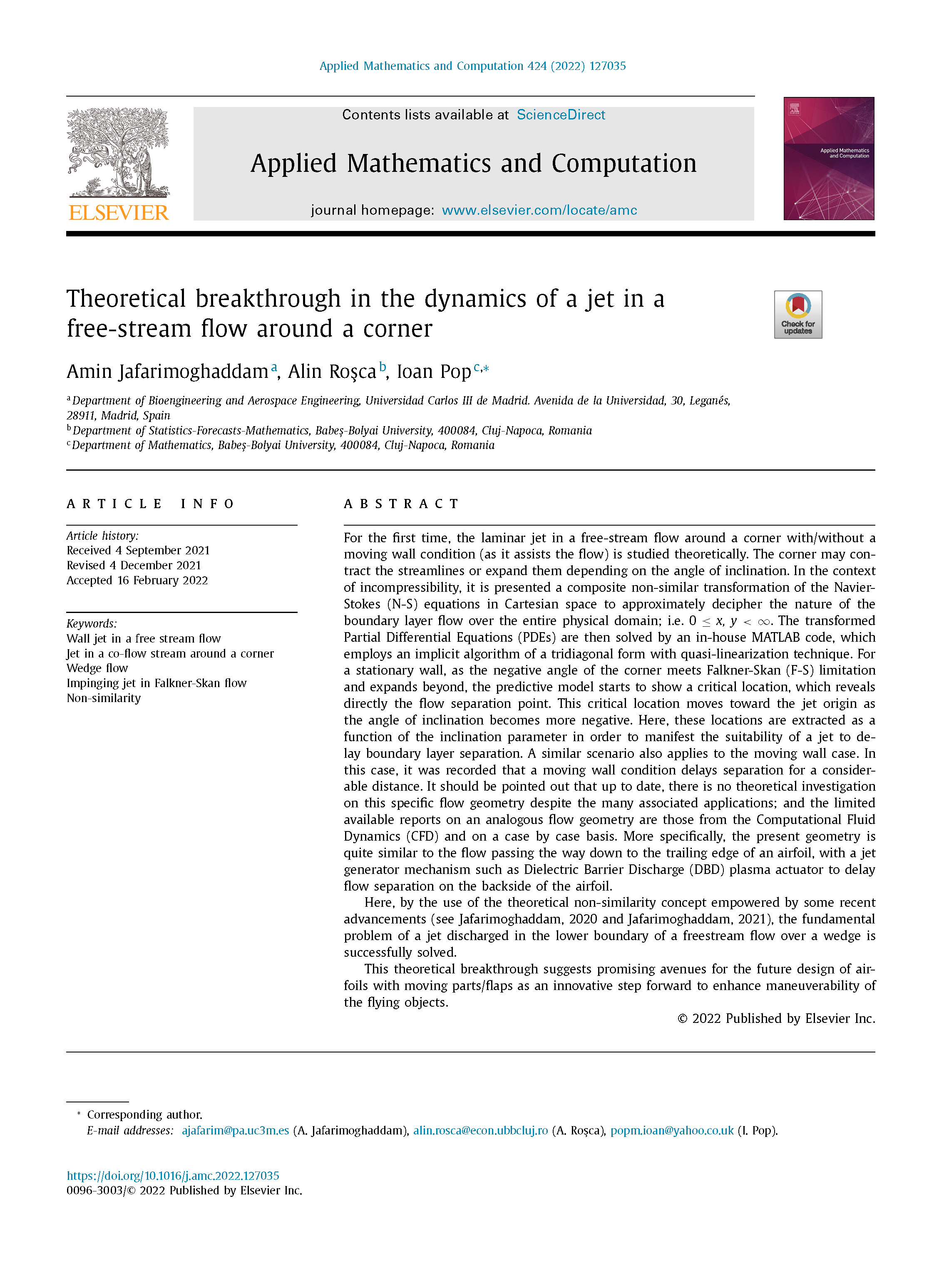|
|
|
Jafarimoghaddam, A., Roşca, A. & Pop, I. (2022) Applied Mathematics and Computation [Matematică, Q2]
Autor:
Ovidiu Ioan Moisescu
Publicat:
20 Martie 2022
Jafarimoghaddam, A., Roşca, A. & Pop, I. (2022) Theoretical breakthrough in the dynamics of a jet in a free-stream flow around a corner. Applied Mathematics and Computation, Vol 424, 127035.
DOI: https://doi.org/10.1016/j.amc.2022.127035
✓ Publisher: Elsevier
✓ Categories: Mathematics, applied
✓ Article Influence Score (AIS): 0.824 (2022) / Q2
Abstract: For the first time, the laminar jet in a free-stream flow around a corner with/without a moving wall condition (as it assists the flow) is studied theoretically. The corner may contract the streamlines or expand them depending on the angle of inclination. In the context of incompressibility, it is presented a composite non-similar transformation of the Navier-Stokes (N-S) equations in Cartesian space to approximately decipher the nature of the boundary layer flow over the entire physical domain; i.e. 0 ≤ x, y < ∞. The transformed Partial Differential Equations (PDEs) are then solved by an in-house MATLAB code, which employs an implicit algorithm of a tridiagonal form with quasi-linearization technique. For a stationary wall, as the negative angle of the corner meets Falkner-Skan (F-S) limitation and expands beyond, the predictive model starts to show a critical location, which reveals directly the flow separation point. This critical location moves toward the jet origin as the angle of inclination becomes more negative. Here, these locations are extracted as a function of the inclination parameter in order to manifest the suitability of a jet to delay boundary layer separation. A similar scenario also applies to the moving wall case. In this case, it was recorded that a moving wall condition delays separation for a considerable distance. It should be pointed out that up to date, there is no theoretical investigation on this specific flow geometry despite the many associated applications; and the limited available reports on an analogous flow geometry are those from the Computational Fluid Dynamics (CFD) and on a case by case basis. More specifically, the present geometry is quite similar to the flow passing the way down to the trailing edge of an airfoil, with a jet generator mechanism such as Dielectric Barrier Discharge (DBD) plasma actuator to delay flow separation on the backside of the airfoil. Here, by the use of the theoretical non-similarity concept empowered by some recent advancements (see Jafarimoghaddam, 2020 and Jafarimoghaddam, 2021), the fundamental problem of a jet discharged in the lower boundary of a freestream flow over a wedge is successfully solved. This theoretical breakthrough suggests promising avenues for the future design of airfoils with moving parts/flaps as an innovative step forward to enhance maneuverability of the flying objects.

inapoi la stiri  vezi evenimentele
vezi evenimentele  home
home 
|